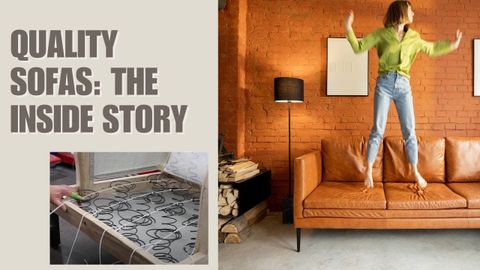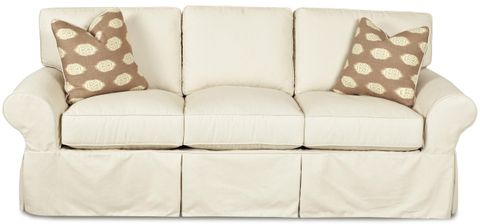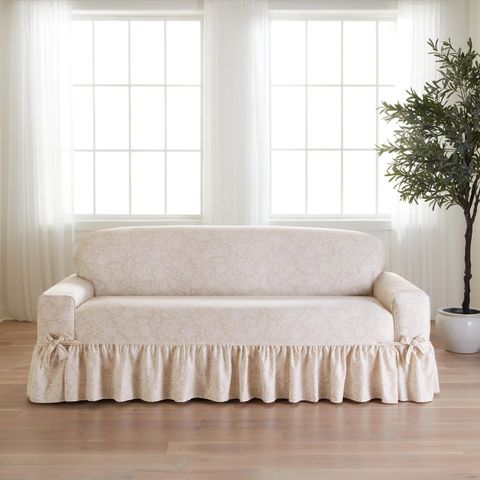Finding the perfect sofa isn’t just about picking something that looks good. It’s about creating a piece that serves your lifestyle while enhancing your home’s aesthetic. Whether you’re looking for a cozy spot to relax after a long day or a statement piece that defines your living room, the right sofa can transform your entire space. But with so many options available, how do you know what will work best for you? Let’s explore the secrets behind choosing a sofa that truly fits your needs.
Think about your last sofa purchase. Was it based on how it looked in the showroom or did you actually consider how it would fit into your daily routine? Many people fall into the trap of focusing purely on aesthetics, but a truly great sofa must serve both form and function. You might have the most beautiful sofa in the world, but if it doesn’t work with your lifestyle, it’s just a pretty decoration. The secret lies in understanding what makes a sofa truly special – not just its appearance, but how it integrates with your life. Let’s break down the key elements that separate a good sofa from a great one.
Understanding Your Lifestyle Needs
Before even stepping into a furniture store, ask yourself some important questions. How many people will use this sofa regularly? Do you entertain guests often, or is it primarily for quiet evenings at home? Are you a pet owner who needs something easy to clean? What’s your typical daily routine? These questions help determine whether you need a large sectional that can accommodate multiple people or a smaller, more intimate seating option. For families with children, durability becomes crucial. Consider materials that resist stains and wear. If you spend a lot of time working from home, look for sofas with good back support and ergonomic design. The right sofa should feel like an extension of your lifestyle rather than something that clashes with it.
Measuring Your Space Properly
One of the biggest mistakes people make is buying a sofa without measuring their space first. A sofa that looks perfect in a catalog might be too big for your room or too small for your needs. Measure the actual dimensions of your space carefully. Take note of doorways, staircases, and any tight corners that might pose challenges during delivery. Consider the traffic flow in your room too – you want enough space around the sofa for people to move comfortably. When you’re shopping, bring along a tape measure and take photos of your space from different angles. This helps you visualize how different sizes and shapes will fit together. Remember, sometimes a slightly smaller sofa can make a room feel more spacious than a giant one that overwhelms the space.
Material Matters: Choosing the Right Fabric
The material of your sofa affects everything from comfort to maintenance. Fabric sofas offer warmth and variety but require more upkeep. Leather provides a sleek look and is easy to clean, though it can feel stiff initially. Microfiber is durable and soft, making it ideal for homes with kids or pets. Wool blends add luxury and natural breathability. Cotton and linen provide a fresh, airy feel that works well in warmer climates. Each material has its pros and cons. For instance, velvet feels luxurious but requires careful handling. Consider your lifestyle when choosing. If you have young children or pets, opt for stain-resistant materials. If you’re prone to allergies, choose hypoallergenic fabrics. Don’t overlook the importance of texture – a smooth fabric can make a room feel more polished, while a textured weave adds visual interest and depth.
The Importance of Comfort and Support
Comfort should never be overlooked, even when aesthetics are the primary focus. A sofa that looks amazing but leaves you uncomfortable after sitting for just ten minutes defeats the purpose. Pay attention to the cushion firmness and the overall shape of the seating area. Test the sofa by sitting on it for several minutes, moving around to see how it feels. Look for sofas with good lumbar support, especially if you spend a lot of time seated. The height of the sofa matters too – too low and it can strain your back, too high and it might feel awkward to get up from. Consider the seat depth as well; you want enough room to sit comfortably without feeling cramped. Think about how you actually use your sofa – do you prefer to lean back or sit upright? Different designs suit different preferences.
Color Psychology and Visual Impact
Colors have a powerful effect on our moods and perceptions. Light colors like white, beige, or light gray make spaces feel larger and more open. Darker shades such as navy blue or charcoal grey add sophistication and drama. Neutral tones tend to be versatile and timeless, while bold colors can make a striking statement. However, consider the lighting in your space. A deep blue sofa might look stunning in bright daylight but appear too dark in dimmer conditions. Patterned sofas can be eye-catching but they also require more thought in terms of matching with other elements in the room. Sometimes a simple solid color is the best choice for maximum flexibility and ease of styling. Think about how the color will interact with your existing décor and whether it will remain appealing over time.
Style and Design Elements to Consider
Different sofa styles complement different interior designs. Traditional sofas often feature ornate details and classic lines, perfect for formal spaces. Modern designs are clean and minimalist, ideal for contemporary settings. Mid-century modern pieces blend retro charm with practicality. Sectionals offer versatility and can define different areas within a room. Loveseats are great for smaller spaces or as accent pieces. Consider the overall theme of your home when selecting a style. Does your décor lean towards rustic, industrial, or Scandinavian? The sofa should either complement these themes or provide a nice contrast that creates visual interest. Also think about the silhouette – some people prefer sleek lines while others enjoy more voluminous shapes. The design details, from armrests to legs, should harmonize with the rest of your furniture.
Choosing the right sofa involves more than just picking something that looks good. It’s about finding a piece that supports your lifestyle, fits your space perfectly, and enhances your home’s overall aesthetic. By considering your daily habits, measuring your room accurately, selecting appropriate materials, prioritizing comfort, thinking about color psychology, and choosing a style that matches your decor, you’ll be well on your way to finding a sofa that truly works for you. Remember, a great sofa is an investment in both your comfort and your home’s appeal. Take your time with the process, test different options, and trust your instincts. After all, you’ll be spending a lot of time on it, so it better be a place you genuinely enjoy being in.














